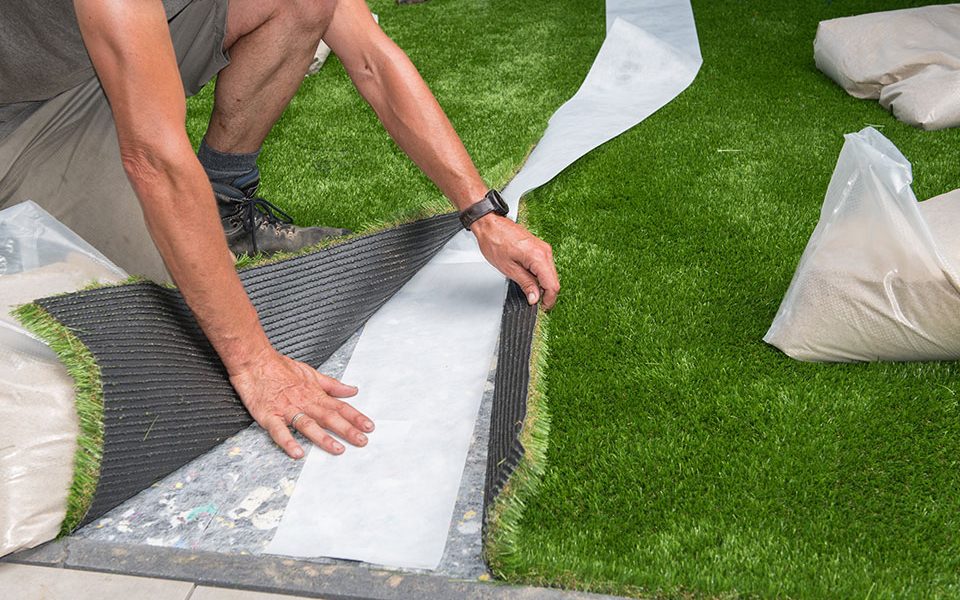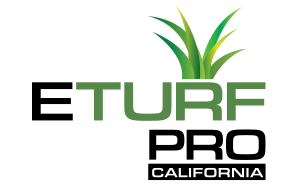Should I Worry About Sun Damage on Artificial Turf?
A common concern among customers is the fear that the sun can damage their artificial turf. But should you really be concerned?
Artificial turf is designed to brace the elements. The technology gives it resistance to all variations of inclement weather and intense outdoor conditions, including direct sunlight.
While sunlight can fade other types of fabric, the materials used in synthetic grass are not affected to the same extent. The turf retains its color and quality, whether used in direct sunlight or complete shade. Keep scrolling to learn more about this.
Direct Sunlight Shouldn’t Be a Cause for Concern
When it comes to extreme temperatures outdoors, artificial turf must withstand high heat and direct exposure to the sun.
Synthetic grass can resist complications from direct sunlight exposure due to its non-organic material and UV-resistant fibers. If you have installed artificial grass, you will never find bleached, dry patches in your field or lawn.
Artificial grass has, however, a slightly negative relationship with heat. During high-temperature days or with consistent exposure to direct sunlight, the material will absorb heat and make the grass very hot to the touch. But this is easy to solve by cooling down the grass with water.
Synthetic Turf Won’t Fade
Most synthetic grass manufacturers understand that fading is an ugly issue regarding synthetic turf. Artificial turf constructed within the last decade has been made with extremely fade- and stain-resistant materials, including polypropylene, polyurethane, and nylon.
These are extremely durable materials and resistant to numerous types of damage such as tearing, ripping, fading, fraying, and puncturing. Prolonged exposure to direct sunlight every day would damage most fabrics, but with artificial grass, that will be a thing of the past.
It can endure extreme heat, focused sunlight, and high foot traffic for long periods without fading, breaking down, or degrading.
No Stain or Discolor Guarantee
Homeowners also worry a lot about staining and discoloration. But since the materials in artificial grass are made of plastic fibers, they are highly resistant to discoloration or staining.
If your artificial grass shows signs of discoloring, it is usually attributed to residue left from pet waste. Hence the reason why many manufacturers recommend regular washing of the turf if pets use your lawn often.
Similarly, most stains stem from harsh paints or chemicals spilled on the lawn. You can easily remedy this by placing a drop cloth on the synthetic turf before using the chemicals.
Reflected Sun Can Affect Artificial Turf
Artificial turf will serve you for many years, even in normal sunny conditions. Manufacturers make sure it can withstand direct sunlight with no problems. But this guarantee can change if you have a large source of reflected sunlight.
Reflective surfaces such as windows and glass fences increase the UV exposure directly hitting the artificial turf. Prolonged exposure can lead to damage and eventually reduced lifespan of the fake grass.
When the sunlight reflecting off the above mentioned sources burns your turf, three things can happen to your lawn:
- It heats up and melts
- Signs of discoloration manifest
- It shrinks
As a result, you will have to replace your turf sooner than expected. Additionally, you need to find measures to curb the effects of reflected sunlight on the turf.
How To Stop Window Reflections
It is easy to reduce reflected light exposure to your artificial turf. And luckily, it does not involve replacing your windows. All you need to do is remove artificial grass from the areas that get excessive glare or reduce the source of glare.
Using Anti-Glare Window Film
One of the most overriding solutions to stopping reflections is applying window film to the exterior part of your window. The film will diffuse the sun rays’ reflection and protect your artificial turf from damage.
You can also opt for screens outside your home to physically block sunlight from reaching reflective surfaces. One major advantage of window treatments is that they intensify energy efficiency for your home.
Removing Turf from Glare Spots
If putting anti-glares or screens throughout your windows does not meet your style designs, you can move the artificial grass out of risky areas.
Luckily, there are many ways to make artificial grass look good in various locations and applications. One way is by installing gravel or restructuring problem spots to cover them with pavers. Also, decorative features such as huge rocks can be a good option.
Planting Shade Trees
Shade trees are ideal, but they can take years to attain a height that offers some benefit in terms of real shade. So, keep this in mind if you consider this option.
Regarding shade, specific types of trees are better than others. Tulips, oaks, and maple trees are known to make great shade trees, while fir and tall pine trees are better used for windbreaks and boundaries.
When probing a suitable shade tree, talk to your local landscaper to find out what tree best fits your purpose. Trees thrive differently in certain climates. And knowing what will bloom in your area will enhance the chances of a good shade.
Awnings
Besides protecting your home’s interior, awnings also get rid of reflections that can damage items on the exterior. Like curtains, carpeting, and upholstery fabric, synthetic grass can fade when exposed to magnified sun rays reflected off reflective surfaces.
You can place awnings in place of windows to easily protect what’s inside your home and lower the intensity of heat generated. A large awning may be ideal for double-door entryways or huge windows. Nowadays, most awnings are retractable, meaning you can lower or raise them when needed.
In Conclusion
Finally, the mystery of sun damage on artificial turf is solved. Direct sunlight does not affect artificial grass– only reflected light causes damage to the grass due to increased UV rays hitting the grass.
You can take the necessary steps to decrease glare from windows. Luckily, there are many ways you can combat reflected light on artificial turf. And if you run into trouble, be sure to call us for immediate assistance.


